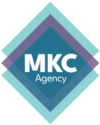For any business, a healthy sales funnel is the visual representation of successful prospect-to-customer conversion. At the top of the funnel comes lead generation through qualified, vetted leads. In the middle stage of the funnel is lead nurturing, wherein you sustain your lead’s interest through marketing, content, and ongoing engagement, and at the bottom of the funnel comes customer acquisition and retention, where you are actively seeking out ways of acquiring and retaining those new clients.
Maintaining a healthy B2B sales funnel may sound obvious, but strategies vary organization-to-organization depending on the lead generation and post-nurturing strategies they observe. When it comes to B2B, businesses make buying decisions based on actual, verified data, so fine-tuning your operations at every stage of the funnel will ensure you are staying competitive with your B2B operations.
Let’s get into 4 simple strategies to perform a quick check-up on the health of your B2B sales funnel. How does your business measure up?
Tracking Sales Data!
There’s a science to tracking sales data and for a business of any size, missing out on the usage of their current sets of data is not only a missed opportunity, but it could also be a grave financial error. Imagine a business guesstimating about their prospects or customers, and applying the same process in understanding how a prospect moves through the stages of your funnel. If at any point you aren’t sure and are relying on guesswork, you’re missing out!
It’s crucial that businesses identify the crucial data points inside their sales funnel that can be used for measuring success and stronger customer conversions. Providing your sales team with measurable data to achieve this is the most important tool you can give them.
Engage Your Customers!
Over the short term, and the long term! Most organizations fall into the trap of offering a paid subscription model, however, the true value lies in providing something that’s useful, valuable, and free to your client to establish trust, and build on that in order to eventually acquire and convert them organically. Consider all the ways that you can accomplish this: marketing, content, blogs, videos, etc.
Training their B2B sales team on making the prospects realize this value will help in having a more effective and successful sales process. When businesses make their prospects see the value their brand can import them, your B2B ops are more likely to have an effect.
Optimize your Bottleneck!
Observe the entire funnel and consider where the bottleneck is actually occurring.
Take the time to craft your sales process, and pre-qualify leads so that the wrong potential clients don’t end up in your sales funnel. A modern CRM software, like Hubspot, can assist businesses to visualize their sales funnel and looking at different data metrics through the individual stages. Such bottlenecks happen when sales and other business processes make it difficult for the leads to move on to the next stage. If your sales funnel has a perceivable sharp drop after lead qualification, that’s a bottleneck. By removing the manual operation aspect of your funnel, you will open up any bottleneck that’s choking your sales ops.
Close Efficiently!
Did you know that on average 50% of sales reps’ time is spent on not engaging potential customers in a sale? Yikes! This statistic can be the answer or solution to a huge bottleneck that may be existing inside the B2B sales funnel. Ensure your team is axed on productivity, and provide closing strategies when necessary. Start tracking KPIs (a super common one would be the average length of a sales cycle, for example), as doing so will allow you to pinpoint sales performance issues, or any other inefficiencies cropping up in the funnel.
Where are the gaps in your business? Get another set of eyes on your brand with MK Consulting. Scale revenue with content that converts. Request a Discovery Consultation and get started towards a healthier B2B marketing funnel today!

